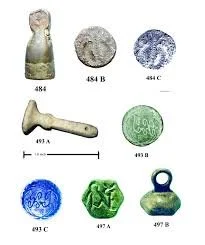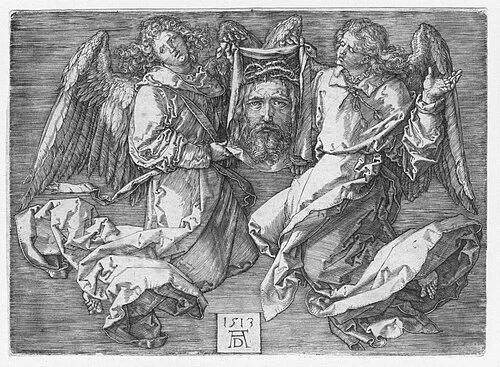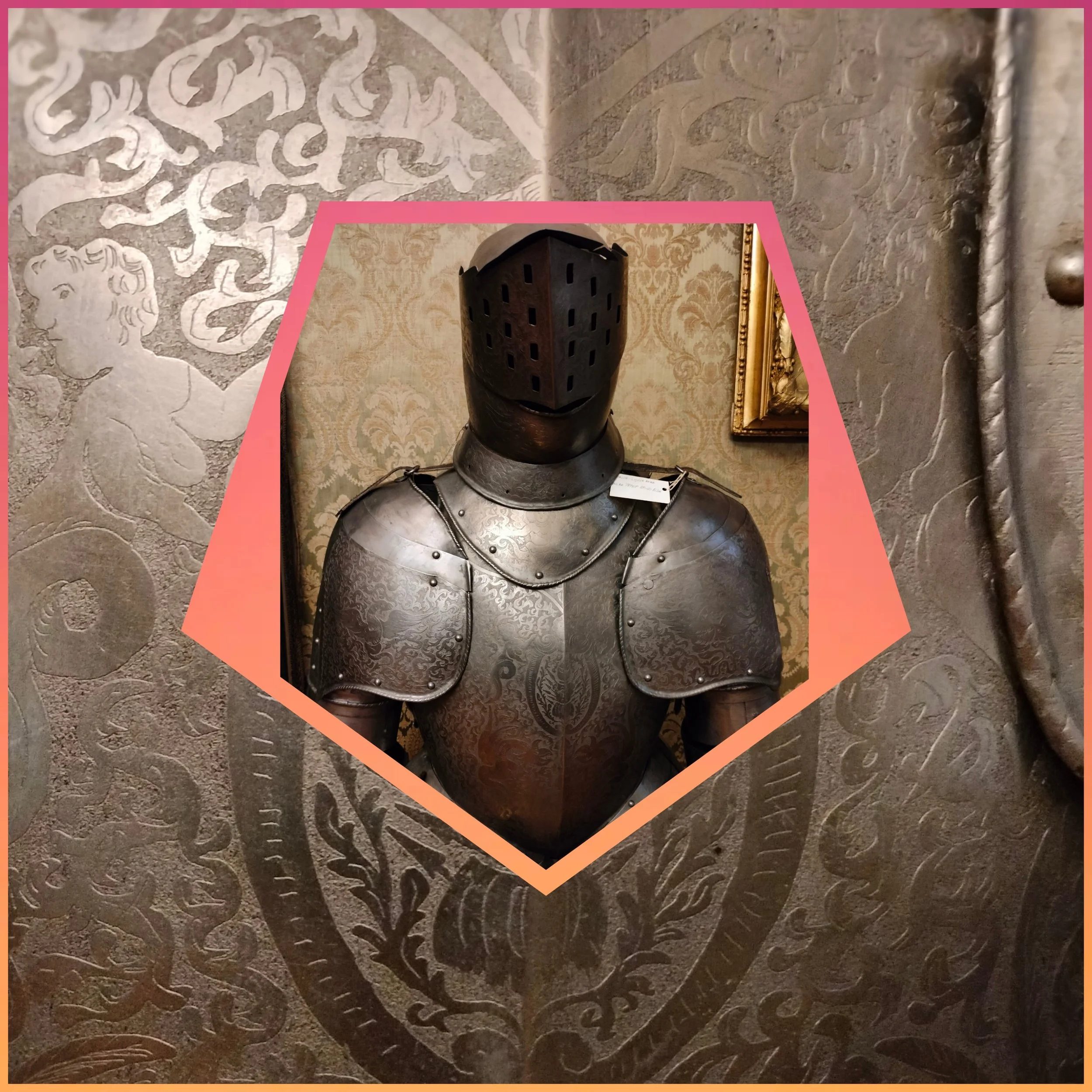History of hand engravings -When the handengraving art started…
💎The Art of Hand Engraving Jewelry: Origins and Evolution 💎
Jewelry has always been more than just adornment—it tells stories. From heirlooms and romantic gestures to become memorations of significant events, jewelry holds deep personal meaning. One of the most intimate ways to customize jewelry is through hand engraving. But where did this craft originate, and how did it evolve?
Engraving is one of the oldest forms of art in human civilization.
The Art of Hand Engraving started a long long time ago: A short story Through History… 🎉
🏺 Ancient Beginnings (Over 5,000 Years Ago)
Artisans in Mesopotamia and ancient Egypt were already engraving stones and amulets with rituals, symbols, and sacred markings. It was like giving jewelry its own secret language!
In antiquity (a time period from the beginning of writing and recorded human history), the only engraving on metal that could be carried out is the shallow grooves found in some jewellery after the beginning of the 1st Millennium B.C. The majority of so-called engraved designs on ancient gold rings or other items were produced by chasing or sometimes a combination of lost-wax casting and chasing.
🏛️ Enter Rome: Seals & Personal Signatures
Fast forward to the Roman era: they engraved gemstones with portraits or scenes to create intaglios, which they pressed into wax to seal letters. Think of it as an ancient personalized stamp—so classy!
Example of Roman seals and engraved stamps.
🎨 Renaissance Glow-Up (14th - 17th ct)
The Renaissance brought serious artistry into engraving. Jewelers were engraving flowers, tiny portraits, even poetry into gold and silver. It became wearable art.
The handengraving art and jewel art reached out to a very high standart level, especially in Italy. Master engravers invented new styles as the well known as florentine engravings, and the niello-technique - the blackening of the engraving that the engraved lines where filled with a black paste to stand out the engraving, making contrast to the metal.
Cameo’s and intaglios where very high in demand.
Picture: An artisan engraving under a gentle lamp—pure poetry in action.
A hand engraver at work around 1750.
⛪ Medieval Magic: Heraldry & Heartfelt
During medieval times, engraving took on heraldic and deeply religious meanings. Knights wore signet rings with family crests, and churches commissioned engraved relics and crosses. This was serious craftsmanship with super strong meaning.
In the European Middle Ages goldsmiths used engraving to decorate and inscribe metalwork. It is thought that they began to print impressions of their designs to record them. From this grew the engraving of copper printing plates - copper plate engraving - to produce artistic images on paper, known as old master prints, first in Germany in the 1430s. Many early engravers came from a goldsmithing background. The first and greatest period of the engraving was from about 1470 to 1530.
European goldsmiths in the Middle Ages used engraving to decorate metal objects, including jewelry and religious artifacts.
Engraving, 1513. Example of hatching (e.g., background) and cross-hatching.
Picture taken by me, in Craotia at the Governor's Museum of the 18th century.
Amazed by the art that one could create at that time.
💑 19th & 20th Centuries: Personal Touch Takeover
Before the advent of photography, engraving was used to reproduce other forms of art, for example paintings. Engravings continued to be common in newspapers and many books into the early 20th century, as they were cheaper to use in printing than photographic images.
Modifying the relief designs on coins is a craft dating back to the 18th century and today modified coins are known colloquially as hobo nickels. The craft continues today, and with modern equipment often produces stunning miniature sculptural artworks and floral scrollwork.
Already by the 1800s, engraving got super personal. Think wedding rings, lockets, watches, initials, sweet messages, and it continues until today. These engravings became treasured, sentimental keepsakes.
Engraved gem is a term for any carved or engraved semi-precious stone; this was an important small-scale art form in the ancient world, and remained popular until the 19th century.
In the 19th century, the industrial revolution brought new challenges and opportunities for hand engraving in the jewelry world:
Traditional craftsmanship remains: Artisanal techniques such as hand engraving, chasing, repoussé, and granular details continued to play an important role, especially in emotionally charged jewelry such as lockets, brooches, and engagement rings.
Mass production: Industrialization led to mechanization, allowing jewelry to be made faster and cheaper. This increased availability, but also raised concerns about a decline in quality and a loss of personal craftsmanship.
During the mid-20th century, a renaissance in hand-engraving began to take place. With the inventions of pneumatic hand-engraving systems that aided hand-engravers, the art and techniques of hand-engraving became more accessible.
🔧 Today: Hand Engraving Still Rocks
Examples of contemporary uses for engraving include creating text on jewellery, such as pendants or on the inside of engagement- and wedding rings to include text such as the name of the partner, or adding a winner's name to a sports trophy. Another application of modern engraving is found in the printing industry. There, every day thousands of pages are mechanically engraved onto rotogravure cylinders, typically a steel base with a copper layer of about 0.1 mm in which the image is transferred.
Although laser engraving dominates mass production, hand engraving remains beloved for its warmth and individuality. No two hand-engraved pieces are identical—each one is a miniature work of art, crafted with skill and love. This tradition continues to shine in luxury jewelry, family heirlooms, and milestone gifts like wedding rings and anniversary presents.
My precious engravers and setters bench…
This is how engraving looks like today … with more advanced tools
My engraver and settersbench, onthe left you see all my old school handengravers, on my handmade bench you see a from left to right a small wooden blok for inside ring engraving, small engravers ball vise, a basic microscope, and a grs pneumatic engraving tool with comporessor for the hard jobs.
Why This All Still Matters?
When you choose a hand engraved ring or necklace, you're not just getting jewelry — you’re wearing a little slice of craft history. It's personal, artistic, and full of soul. 💖
Want a Piece with Meaning?
If you're thinking about something special — maybe your initials, a secret date, or a tiny doodle inside a ring — I’d love to help you with an handengraver as myself who gets your story, to provide you of a jewel that can write your history and memories.
Handengraved initials and flowers all around
An example of a custom made ring in 14k yellow gold, hand engraved with the initials af the bride and groom, hand engraved with flowers all around the ringband, in every flower is a lab grown diamond.
This type of ring is available on my webshop (engraved-jewelry.com) in 14k gold and 925 silver - in 2 withs and two types of rings.
Cliclk the foto to see the item in my shop.







